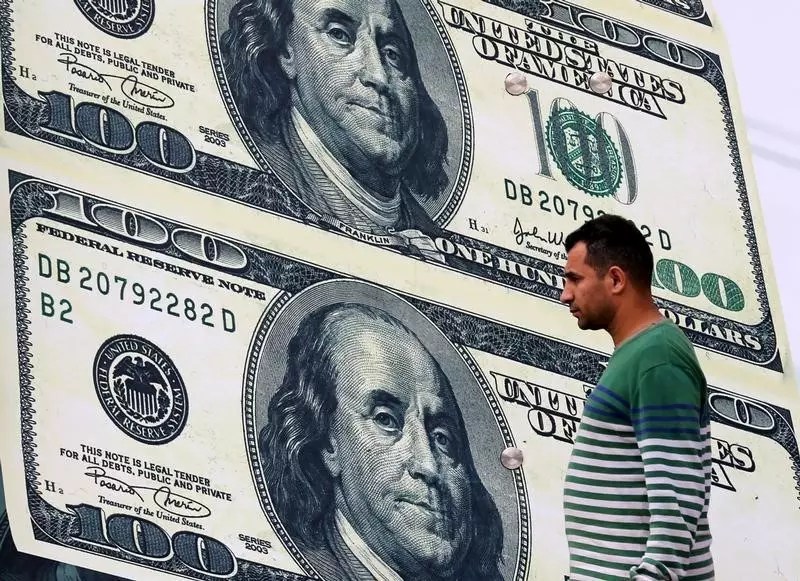The current landscape of global finance has become increasingly complex, particularly regarding the US dollar’s recent performance. Following a significant downturn linked to recent inflation reports, the dollar demonstrated a notable stabilization on Thursday. This shift occurred amidst a backdrop of fluctuating economic indicators, raising questions about its future trajectory and overall strength.
The dollar found itself on a firmer footing after a turbulent trading day on Wednesday when it succumbed to losses in response to a broadly positive consumer price index (CPI) report. At around 04:45 ET, the Dollar Index—a metric that gauges the greenback against a selection of six other major currencies—rose to a modest 108.950, effectively halting a three-day streak of losses. Analysts noted that the cooler-than-expected CPI figures sparked a brief surge in global asset markets, yet lingering concerns about persistent inflation levels hinted that the Federal Reserve’s plans for interest rate cuts may be more complicated than previously anticipated.
In a note from ING, the analysts emphasized the dual pressures on the dollar stemming from the mixed CPI data and the evolving climate set to ensue with the upcoming inauguration of Donald Trump. His proposal to implement stringent tariffs against various trading partners is likely to shuffle inflationary pressures and complicate fiscal policies.
Meanwhile, across the Atlantic, the situation was more precarious for the British pound. The GBP/USD pair slipped by 0.3% to trade at 1.2199, as bleak economic data revealed that the UK economy has struggled to return to robust growth. While there was a slight increase in GDP by 0.1% in November compared to October, this figure fell short of the anticipated 0.2% rise, signaling a weak recovery. Given this disappointing growth, the Bank of England’s impending interest rate cuts have become a significant topic of conversation, with expectations of further reductions likely to bolster sentiment around easing monetary policy in the near term.
The data paints a sobering portrait of the UK’s economic health, suggesting that even incremental growth is insufficient to satisfy market expectations. The anticipated actions by the Bank of England may create a ripple effect, challenging the pound’s resilience in the competitive currency landscape.
Compared to its British counterpart, the euro has displayed a tepid performance. The EUR/USD exchange rate dipped slightly to 1.0290 as traders reacted to dismal inflation data across Germany and Italy. Analysts from ING pointed out that despite opportunities for the euro to rally—fueled by a narrowing of two-year interest rate spreads—the currency has struggled to gain significant traction amidst fears of underperformance within the eurozone. This hesitation stems from a combination of weak growth prospects and poor leadership within the European Union.
The outlook from the European Central Bank (ECB) suggests more interest rate cuts are on the horizon, with expectations of around 100 basis points by 2025. As these monetary policies develop, the eurozone’s economic health appears increasingly precarious, prompting speculation about how these systemic challenges will influence the euro’s standing against the dollar.
In the Asian markets, the Japanese yen has shown comparative strength, particularly following comments from Bank of Japan (BOJ) Governor Kazuo Ueda suggesting potential interest rate hikes in the upcoming meeting. This development pushed the USD/JPY pair down by 0.4% to a value of 155.75, marking a significant retreat to levels not seen since mid-December. Investor sentiment appears increasingly receptive to the possibility of Japanese monetary policy shifting toward tightening as inflation and wage growth gain traction.
As the market prepares to dive into pivotal fourth-quarter GDP data slated for release soon, the Chinese yuan has traded in a narrow range around a 16-month high, indicating a potential turning point for the currency amidst the unfolding global economic narrative.
The current state of the US dollar reflects a delicate balance of market sentiment, economic indicators, and forthcoming political developments. As traders and investors navigate these complexities, understanding the underlying dynamics will be crucial for forecasting potential currency movements in the near future.


Leave a Reply